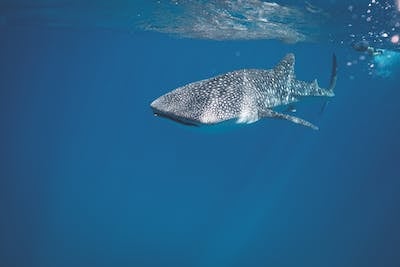Climate Change Effect on Life Below Water
Climate change has significant effects on life below water, impacting marine ecosystems, biodiversity, and the livelihoods of coastal communities that rely on marine resources. Here are some of the key effects of climate change on life below water:

Climate Change Effect on Life Below Water
Ocean Warming: Rising global temperatures lead to ocean warming, which can disrupt marine habitats and alter marine species' distribution patterns. Some marine species may struggle to adapt to warmer waters, while others may thrive, leading to shifts in marine biodiversity.
Ocean Acidification: Increased carbon dioxide (CO2) emissions in the atmosphere also contribute to ocean acidification. As the ocean absorbs excess CO2, it becomes more acidic, posing a serious threat to marine organisms with calcium carbonate shells or skeletons, such as corals, mollusks, and certain plankton species.
Coral Bleaching: Higher ocean temperatures can cause coral bleaching, where corals expel the symbiotic algae that provide them with essential nutrients and color. Prolonged bleaching events can lead to coral death and the degradation of coral reef ecosystems, which are vital for marine biodiversity and coastal protection.
Sea Level Rise: Melting glaciers and ice sheets due to climate change contribute to rising sea levels. Sea level rise can lead to the inundation of coastal habitats, including mangroves and wetlands, which are crucial for supporting marine life and providing coastal protection.
Changes in Ocean Currents and Circulation: Climate change can disrupt ocean currents and circulation patterns, impacting marine ecosystems and influencing the distribution and migration patterns of marine species.
Shifts in Fish Populations: Warming waters and changing ocean currents can lead to shifts in the distribution and abundance of fish populations. This can affect fishing industries and the availability of fish as a critical food source for coastal communities.
Loss of Biodiversity: Climate change, combined with other human-induced pressures like overfishing and habitat destruction, can result in the loss of marine biodiversity. This can lead to imbalances in marine ecosystems and the collapse of certain fisheries.
Extreme Weather Events and Storm Surges: Climate change increases the frequency and intensity of extreme weather events, such as hurricanes and typhoons, which can cause severe damage to marine ecosystems and coastal communities.
Loss of Coastal Ecosystems: Rising sea levels and increased storm surges can lead to the erosion and loss of coastal ecosystems like mangroves, seagrass beds, and salt marshes. These habitats are critical for supporting marine biodiversity and providing coastal protection against storms.
Impact on Marine Food Chains: Disruptions in marine ecosystems can cascade through food chains, affecting not only fish populations but also other marine organisms that depend on them for food.
Loss of Livelihoods: Coastal communities that rely on fishing and marine resources for their livelihoods are particularly vulnerable to the impacts of climate change on life below water. Declining fish stocks and degraded marine ecosystems can threaten the economic and food security of these communities.
Addressing climate change and its impacts on life below water is crucial for safeguarding marine biodiversity, coastal ecosystems, and the well-being of millions of people who depend on the ocean for their livelihoods and sustenance. This requires global cooperation and ambitious climate action to reduce greenhouse gas emissions, protect marine habitats, and promote sustainable management of marine resources.



Comments
Post a Comment